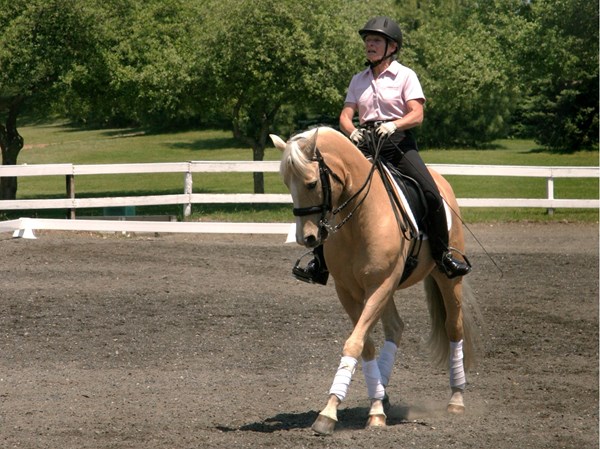
Half passes seem to fall into two categories in the show ring: those that look easy and those that don’t. This is especially true at Third Level, where the half pass is introduced, but ones in Prix St. George can look sludgy as well.
Half passes appear so easy when done well, but they can be very hard to sort out for riders new to the movement, who will then contort their bodies into amazing pretzels. This isn’t so obvious when observed from the side, but the judge at C can clearly tell what’s going on. What I often see is someone working so hard with the outside leg that she breaks over her outside hip and leans away from the direction of flow. When that happens, the horse will usually become too heavy onto one shoulder and also become unlevel to some degree.
Another problem that happens when the rider leans toward the outside of the horse is that he can become counter-bent. Then the half pass turns into a leg-yield and the score will take a major hit. This usually happens at the trot, but I’ve seen counter-bent canter half passes which, when you think of it, is a pretty interesting trick.
A rider starting out with learning half passes, or who constantly receives a low score for the half pass, should evaluate the quality of the travers (haunches-in) performed on the long side of the ring. That’s because a half pass is basically a travers performed on a diagonal. Yes, it’s that simple – no need for over-thinking the half pass if the travers works well. The only thing that makes the half pass harder than a travers on the wall is that the diagonal doesn’t have a solid line to follow.
What you do is turn off the wall and point the horse onto the diagonal. Then go into a travers to the centerline or however far you intend to go. The horse’s cleavage (and the rider’s) should be pointing along the diagonal, while the horse’s tail points toward the short end of the ring. This position is created through bending under the rider’s inside leg. Okay, maybe it’s not that simple – there’s more to think about with the outside rein, and the rider’s position, and the degree of engagement, and the angle across the ring, and half halts, and, and, and . . . . But, when it all works it really feels – and looks – that simple.











